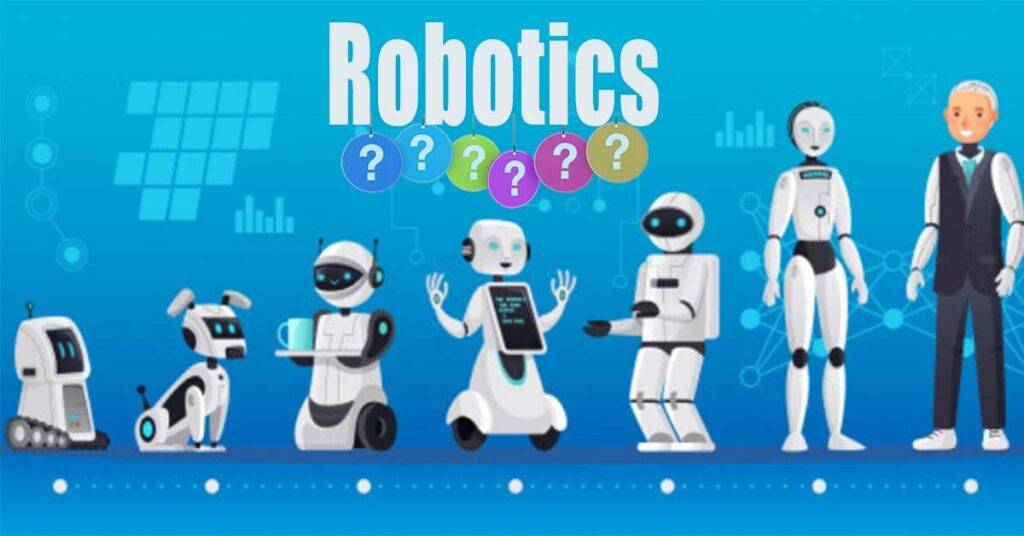Robotics is a branch of AI, which is composed of different branches and applications of robots. The goal of the field of robotics is to develop smart machines that can help people in a variety of ways. Although the study of robotics and the investigation of the capabilities and possible applications of robots have expanded significantly in the 20th century, the concept is unquestionably, not a new one.

A robot could be a machine that looks like a person, or it could be a robotic application like robotic process automation (RPA), which mimics how people interact with software to carry out routine, rule-based tasks.
RPA (Robotic Process Automation)
RPA for short, Robotic Process Automation, is a method of automating tedious and repetitive processes. By using software robots, this technology enables businesses to automate manual, rule-based, repetitive processes.
RPA lowers costs, boosts productivity and accuracy, and frees up staff so they can concentrate on higher-value tasks. This automation technology works effectively for repeated, rule-based, highly structured processes.
A robot is a device that can autonomously complete complicated tasks, to put it simply. Although they are frequently linked with factories and assembly lines, robots are essential in more delicate jobs like surgery and nursing.
Robots
Finding repetitive manual operations in your everyday work routines is the key to adopting RPA. You may write the programming for an RPA bot to perform these activities after they are well-defined.
It’s important to note that RPA merely executes pre-programmed tasks and does not make decisions.
The information is analyzed, processed, and used by RPA software to carry out repeated operations. An RPA bot, for instance, may be programmed to take data from one computer system, modify it, and then transfer it to another. If properly designed, RPA methods can eliminate the requirement for a human operator to manually do the same tasks.
RPA & AI
RPA and artificial intelligence are often used interchangeably, considering the close relationship between the two. However, many applications embrace the subtleties of AI, others focus on robotic automation.
Even if RPA is only capable of automating routine processes, you may employ AI to broaden your horizons and exert control over a variety of unexplored areas. Giant IT companies currently employ AI to improve client experiences to increase the use of their services and applications. These services are accessible in public spaces where people work, making them a necessary component of everyone’s daily life.
Robotics Feature
Robots come in a wide variety of designs and are employed for a wide range of purposes in a wide variety of settings. Despite having a very wide range of applications and forms, they all have three fundamental constructional features in common:
- All robots have some sort of mechanical construction, such as a frame, form, or shape that is intended to carry out a certain duty. For instance, a robot with caterpillar tracks might be used to move through mud or heavy dirt. The mechanical component is mostly the creator’s response to finishing the task at hand and addressing the physics of the surroundings. Form comes after a function.
- Electrical components power and regulate the machinery of robots. A robot with caterpillar tracks, for instance, would require some sort of electricity to move the tracker treads. Electricity, the source of that power, must pass through a wire and begin in a battery, completing a fundamental electrical circuit. Even devices driven mostly by gasoline need an electric current to initiate the combustion process, which is why the majority of gasoline-powered vehicles, including cars, contain batteries.
- A certain amount of computer programming code is present in every robot. A robot uses a program to determine what to do and when to do it. In the caterpillar track example, a robot that needed to cross a muddy road might be built correctly mechanically and get the right amount of electricity from its battery, but it wouldn’t move unless a computer instructed it to.
- A robot can have an outstanding mechanical and electrical design, but if its program is improperly constructed, its performance would be very poor. Programs are the fundamental component of a robot.
Robotics Applications
Industrial robots and a wide variety of other robots are utilized nowadays to carry out monotonous tasks. They could appear as standard humanoid robots, robotic exoskeletons, or robotic arms.
Manufacturers and warehouses, including those owned by Amazon, Devol, Best Buy, and others, use industrial robots and robot arms.
A robot or robotic system’s actions are guided by a combination of computer programming and algorithms, a remotely controlled manipulator, actuators, control systems — action, processing, perception — real-time sensors, and an element of automation.
Some additional applications for robotics are the following:
- Home Electronics
- Computer science/computer programming
- Artificial Intelligence
- Data Science
- Law enforcement/military
- Mechanical Engineering
- Mechatronics
- Nanotechnology
- Bioengineering/healthcare
- Aerospace
History of Robotics
The word robot is expanded upon in the term robotics. The word was originally used in 1920 by Czech playwright Karel Capek in his play Rossum’s Universal Robots. But according to Oxford English Dictionary, Isaac Asimov, a science fiction writer, is credited with coining the phrase in the 1940s.
Three guiding principles for the conduct of intelligent machine learning and autonomous robots were put forth by Asimov in his narrative.
Asimov’s Three Laws of Robotics remain valid today:
- Humans must never be harmed by robots.
- Robots must obey human commands without breaking rule 1, and they must defend themselves without breaking any other rules.
- The first programmable robot, Uni-mate, was developed in 1961 to transport hot metal parts from a die-cast process, two decades later and based on concepts from the 1950s.


